- Overview of Strawberry Diseases
- Gray Mold (Botrytis Fruit Rot)
- Leaf Spot (Mycosphaerella fragariae)
- Powdery Mildew (Podosphaera aphanis)
- Anthracnose (Colletotrichum spp.)
- Root Rot (Phytophthora spp.)
- Fusarium Wilt
- Symptoms
- Transmission
- Control Methods
- Conclusion
- Gray Mold
- Symptoms
- Conditions Favoring Gray Mold
- Control Methods
- Conclusion
- Anthracnose
- Powdery Mildew
- Symptoms
- Control Methods
- Prevention
- Summary
- Leaf Spot
- Verticillium Wilt
- Root Rot
- Effective Control Methods for Strawberry Pests
- Integrated Pest Management (IPM)
- Biological Controls
- Row Covers
- Sanitation
- Chemical Controls
- Conclusion
- Aphids
- Identification
- Signs of Infestation
- Control Methods
- Question-answer:
- What are some common diseases that affect strawberries?
- How can I prevent gray mold on strawberries?
- What is the best way to control powdery mildew on strawberries?
- How do I know if my strawberries are infected with leaf spot?
- What is the main cause of root rot in strawberries?
- Are there any natural methods to control pests on strawberries?
- Video: We grow DELICIOUS STRAWBERRIES! (pest and disease prevention)
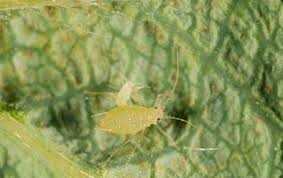
Strawberries are delicious fruits that are loved by many, but unfortunately, they are also susceptible to various diseases and pests. These issues can significantly impact the quality and yield of strawberry crops, making it essential for growers to implement effective control methods. In this article, we will explore some of the most common diseases and pests that affect strawberries and discuss the best strategies for their control.
One of the most prevalent strawberry diseases is gray mold, also known as botrytis fruit rot. This fungal disease thrives in humid conditions and can quickly spread from infected fruits to healthy ones. Gray mold can be controlled by practicing good sanitation in the field, removing infected fruits promptly, and applying appropriate fungicides. It is also crucial to provide adequate air circulation and avoid overwatering, as these conditions promote the growth of gray mold.
Another significant disease that affects strawberries is powdery mildew. This fungal infection manifests as a white powdery coating on the leaves, stems, and fruits of strawberry plants. Powdery mildew can weaken the plants and reduce fruit quality and yield. To control powdery mildew, it is important to remove infected plant parts, promote good air circulation, and apply fungicides when necessary. Additionally, choosing resistant strawberry varieties can help prevent powdery mildew.
When it comes to pests, strawberry plants are vulnerable to various insects, including aphids, spider mites, and strawberry crown moth larvae. These pests feed on the leaves and fruits of the plants, causing damage and potentially transmitting diseases. To control pests, growers should regularly monitor their fields for signs of infestation, employ biological control methods such as introducing beneficial insects, and use insecticides when necessary. Additionally, removing weeds and maintaining proper plant hygiene can help prevent pest outbreaks.
Overview of Strawberry Diseases
Gray Mold (Botrytis Fruit Rot)

Gray mold is one of the most common and destructive diseases of strawberry plants. It is caused by the fungus Botrytis cinerea. The disease primarily affects the ripe fruit, causing a grayish mold to develop on the surface. Gray mold can also affect flowers, stems, and leaves under certain conditions. It spreads rapidly in humid and wet environments.
Leaf Spot (Mycosphaerella fragariae)
Leaf spot is a fungal disease that affects the leaves and can lead to reduced fruit production. It causes small purplish or reddish-brown spots on the upper surface of the leaves. As the disease progresses, the spots may enlarge and turn grayish or white in the center. Severe infections can cause the leaves to become yellow and eventually die.
Powdery Mildew (Podosphaera aphanis)
Powdery mildew is a common fungal disease that affects many plants, including strawberries. It appears as a powdery white or gray growth on the leaves, stems, and fruit. The affected plant parts may also become distorted and stunted. Powdery mildew thrives in warm and humid conditions, but can also occur in cool climates.
Anthracnose (Colletotrichum spp.)
Anthracnose is a fungal disease that affects various parts of the strawberry plant, including the fruit, leaves, and crowns. It causes small, dark, sunken lesions on the fruit, often accompanied by a pinkish spore mass. On leaves, it appears as small circular spots with reddish or purple borders. Severe infections can lead to fruit rot and plant decline.
Root Rot (Phytophthora spp.)
Root rot is a serious disease caused by several species of the soil-borne fungus Phytophthora. It affects the roots and crown of strawberry plants, leading to wilting, browning, and eventual death. Infected plants may show stunted growth and yellowing of leaves. The disease is favored by wet and poorly drained soil conditions.
Fusarium Wilt
Fusarium wilt is a common and devastating disease of strawberry plants caused by the fungus Fusarium oxysporum. This disease affects various parts of the plant, including the roots, crown, and vascular system.
Symptoms
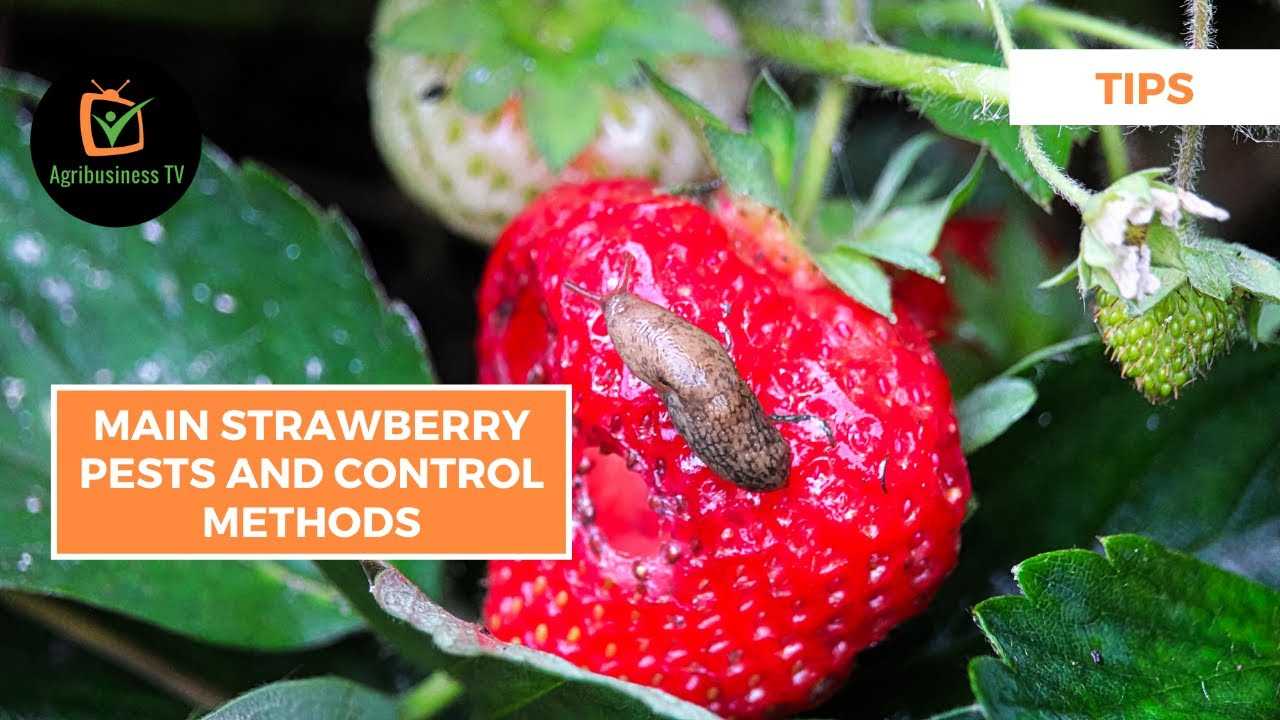
- Wilting and yellowing of leaves
- Dark brown discoloration of the vascular tissues
- Poor growth and stunted plants
- Eventual death of the plant
Note: Symptoms may appear differently depending on the strawberry cultivar and the severity of the infection.
Transmission
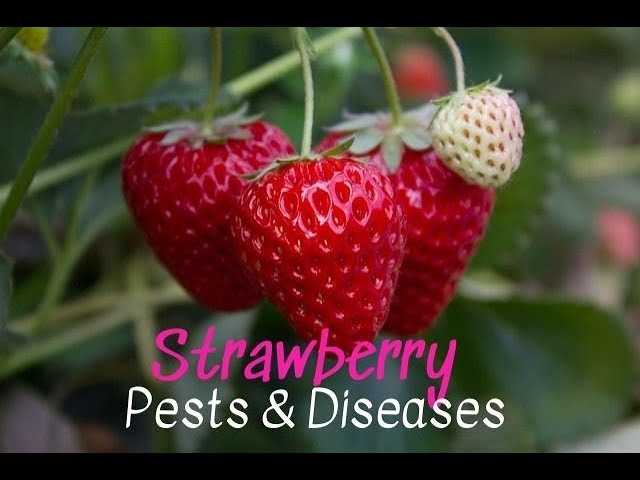
Fusarium wilt can be transmitted through infected soil, infected planting material, or contaminated tools and equipment. The fungus can survive in the soil for several years, making it important to implement proper preventive measures.
Control Methods
To effectively control Fusarium wilt in strawberry plants, you can follow these methods:
- Crop rotation: Avoid planting strawberries in the same soil where the disease has occurred previously. Implement a three- to four-year rotation cycle with non-host crops.
- Sanitation: Remove and destroy any infected plants, as well as any surrounding weeds or debris. Disinfect tools and equipment between use to prevent spread.
- Resistant cultivars: Choose strawberry cultivars that are resistant to Fusarium wilt. Consult with local agricultural extension services or nurseries for recommendations.
- Soil solarization: This method involves covering the soil with a clear plastic tarp during hot summer months to raise the temperature and kill pathogens. This can help reduce Fusarium wilt populations in the soil.
- Fungicide treatments: If Fusarium wilt is a recurring problem in your area, fungicide treatments may be necessary. Consult with a professional or local agricultural extension services for appropriate fungicides and application methods.
Conclusion
By implementing proper preventive measures and adopting the control methods mentioned above, you can reduce the impact of Fusarium wilt on your strawberry plants. Regular monitoring and early detection are essential for effective disease management.
Gray Mold
Gray mold, also known as botrytis fruit rot, is a common fungal disease that affects strawberries. It is caused by the fungus Botrytis cinerea and can cause significant damage to the fruit, reducing crop yield and quality.
Symptoms
Gray mold starts as a brownish gray lesion on the fruit, which then spreads rapidly, covering the entire berry. The affected berries often have a soft texture and may have a fuzzy gray mold growth on the surface. In severe cases, the mold may even infect the stems, leaves, and flowers of the strawberry plant.
Conditions Favoring Gray Mold
Gray mold thrives in cool, humid weather conditions. The fungus can reproduce rapidly under high humidity or in the presence of moisture on the plant surface. Poor air circulation and overcrowding of plants can also create an environment that is conducive to the development of gray mold.
Control Methods
To effectively control gray mold, it is essential to implement integrated pest management strategies. Here are some effective control methods:
Sanitation: Regularly remove and destroy infected plant debris, such as dead leaves and rotting fruits. This will help reduce the source of infection.
Proper plant spacing: Plant strawberry plants with adequate spacing to allow for better air circulation, which can help prevent the development and spread of gray mold.
Managing humidity: Avoid over-irrigation and water plants early in the day to allow leaves and berries to dry quickly. This will help minimize the moisture levels and create an unfavorable environment for gray mold.
Fungicide application: In severe cases, where cultural control methods are insufficient, fungicides can be used to manage gray mold. Consult with a local agricultural extension office for specific fungicide recommendations.
Conclusion
Gray mold is a common disease that can have detrimental effects on strawberry crops. By following proper cultural practices and implementing effective control methods, growers can minimize the impact of gray mold and ensure a healthy strawberry yield.
Anthracnose
- Overview:
- Symptoms:
- Spread:
- Control:
- Sanitation: Remove and destroy infected plant debris, including fallen leaves and berries, to reduce the source of inoculum. Keep the growing area clean and weed-free.
- Proper watering: Avoid overhead irrigation and instead use drip irrigation or soaker hoses to keep the foliage dry. This helps to prevent the spread of spores and creates an unfavorable environment for the fungus to thrive.
- Planting resistant varieties: Choose strawberry varieties that have shown resistance to anthracnose. This can help reduce the risk of infection and minimize the severity of the disease.
- Fungicide applications: In severe cases or when other control methods are insufficient, fungicides can be used to manage anthracnose. Consult with local agricultural extension or experts for specific recommendations on fungicides and proper application timing.
- Prevention:
- Plant strawberries in well-drained soil with good air circulation.
- Avoid overcrowding plants to reduce humidity and create better airflow.
- Rotate crops and avoid planting strawberries in the same area for multiple years.
- Monitor plants regularly for signs of anthracnose and take immediate action if symptoms are observed.
- Ensure proper nutrition and provide balanced fertilization to promote plant health and disease resistance.
- Conclusion:
Anthracnose is a common fungal disease that affects strawberry plants. It is caused by various species of the Colletotrichum fungus. The disease can attack different parts of the plant, including the leaves, stems, flowers, and fruit. Anthracnose can cause significant damage and economic losses in strawberry crops if not properly managed.
Anthracnose symptoms can vary depending on the part of the plant affected. They commonly include small, dark, sunken lesions on the fruit, red or brown spots on the leaves, stem lesions that can lead to wilting or dieback, and flower blight. Infected ripe fruit can develop pinkish spore masses.
The Colletotrichum fungus that causes anthracnose spreads through spores that are easily splashed or carried by rain, wind, or insects. Infected plant debris, including fallen leaves and berries, can also contribute to the spread of the disease. The fungus can survive in the soil and infected plant materials, allowing it to persist from one growing season to the next.
Effective management of anthracnose involves a combination of cultural, biological, and chemical control methods. Here are some control measures to consider:
Preventing anthracnose is crucial for maintaining healthy strawberry plants. Here are some preventative measures to consider:
Anthracnose is a common and economically important disease in strawberry crops. Effective control methods include sanitation practices, proper watering techniques, planting resistant varieties, and judicious use of fungicides. Prevention through good cultural practices and regular monitoring is also essential for managing anthracnose and maintaining healthy strawberry plants.
Powdery Mildew
Powdery mildew is a common fungal disease that affects strawberry plants. It is caused by the fungus Podosphaera aphanis. This disease can significantly reduce the yield and quality of strawberries if not properly controlled.
Symptoms
- White, powdery-like patches on the leaves, stems, and flowers of strawberry plants
- Infected leaves may become distorted and curl
- Increased susceptibility to other diseases and pests
Control Methods
1. Cultural Control:
- Plant resistant strawberry varieties
- Ensure proper spacing between plants for good air circulation
- Remove and destroy infected plant material
- Avoid overhead irrigation, as it creates a favorable environment for powdery mildew
2. Chemical Control:
Use fungicides as a last resort and only when necessary. Consult with a local agricultural extension office or a professional for proper fungicide selection and application. Follow all label instructions and safety precautions.
Prevention
- Keep the planting area clean and free from weeds
- Monitor plants regularly for symptoms of powdery mildew
- Apply fungicides preventively before the disease becomes established
- Follow good gardening practices, such as adequate fertilization and watering, to maintain plant health
Summary
Powdery mildew is a fungal disease that can have detrimental effects on strawberry plants. Proper cultural control measures, such as planting resistant varieties and maintaining good plant hygiene, can help prevent and manage this disease. Chemical control should be used judiciously and as a last resort. Regular monitoring and early intervention are essential for effective powdery mildew management.
Leaf Spot
Leaf spot is a common disease that affects strawberries. It is caused by various fungal pathogens, including Mycosphaerella fragariae and Septoria fragariae. The disease primarily affects the leaves of the strawberry plant, but it can also infect the fruits and stems.
Symptoms:
- Small, dark brown lesions on the leaves
- Lesions often have a yellow halo surrounding them
- Lesions may merge, forming larger necrotic areas
- Infected leaves may become distorted or curl
- In severe cases, leaves may defoliate
Management and Control:
To effectively control leaf spot, it is important to implement integrated pest management strategies:
- Sanitation: Remove and destroy infected plant material, including leaves, fruits, and stems. This helps reduce the source of inoculum.
- Cultural practices: Provide adequate spacing between plants to improve air circulation. Avoid overhead irrigation, as it can promote leaf wetness and disease development. Mulching can also help prevent splashing of soilborne spores onto the leaves.
- Chemical control: Fungicides may be necessary to manage severe leaf spot infections. Consult with a local extension service or agricultural professional for appropriate fungicide recommendations.
- Resistant varieties: Planting resistant strawberry cultivars can help reduce the risk of leaf spot. Consult with local nurseries or extension services for recommended varieties.
In conclusion, leaf spot is a common disease that affects strawberries. Early detection and implementation of appropriate management practices are essential to prevent the spread of the disease and minimize crop losses.
Verticillium Wilt
Verticillium wilt is a fungal disease that affects strawberry plants. It is caused by the soil-borne fungus Verticillium spp. The disease is more common in regions with cool, moist soil conditions.
Symptoms:
- Wilting and yellowing of foliage
- Stunting of plants
- Brown discoloration of vascular tissue in the crown and roots
- Premature death of infected plants
Spread of the disease:
The Verticillium fungus survives in the soil and can persist for many years. It enters strawberry plants through the roots and spreads through the vascular tissue. The fungus can also spread through infected soil, water, tools, and plant debris.
Control methods:
- Sanitation: Remove and destroy infected plants and plant debris to reduce the amount of inoculum in the soil.
- Resistant varieties: Plant strawberry varieties that are resistant to Verticillium wilt.
- Soil solarization: Solarize the soil by covering it with clear plastic during the hot summer months to kill the Verticillium fungus.
- Crop rotation: Rotate strawberry plants with non-susceptible crops, such as corn or beans, for at least 3 years to reduce the build-up of the fungus in the soil.
- Soil fumigation: Use soil fumigants, such as methyl bromide, before planting to kill the Verticillium fungus.
Conclusion:
Verticillium wilt can be a devastating disease for strawberry plants, causing wilting, stunting, and death. However, by practicing good sanitation, using resistant varieties, and implementing soil management techniques, it is possible to control the disease and reduce its impact on strawberry crops.
Root Rot
Root rot is a common fungal disease that affects strawberry plants. It is caused by various species of soil-borne fungi, such as Pythium, Phytophthora, and Rhizoctonia. These fungi thrive in wet and poorly drained soil conditions, making it essential to provide proper drainage for strawberry plants.
Symptoms of Root Rot:
- Wilting and yellowing of leaves
- Stunted growth
- Root discoloration, usually brown or black
- Root rot can progress to the crown of the plant, causing crown rot
Control and Prevention:
- Site selection: Choose well-draining soil for planting strawberries. Avoid areas prone to waterlogging and flooding.
- Proper irrigation: Make sure to water strawberry plants adequately, but avoid overwatering. Use drip irrigation or soaker hoses to deliver water directly to the soil, minimizing moisture on the leaves and stems.
- Rotate crops: Avoid planting strawberries in the same spot for consecutive years. Crop rotation helps break the disease cycle and reduces the risk of root rot.
- Sanitation: Remove and destroy infected plants promptly to prevent the spread of the disease. Clean and disinfect gardening tools after each use to avoid transferring the fungus to healthy plants.
- Fungicides: In severe cases, fungicides can be used to control root rot. However, their effectiveness may vary depending on the specific fungal species causing the disease. Consult with a local agricultural extension office or a professional for appropriate fungicide recommendations.
Conclusion:
Root rot can significantly affect the health and productivity of strawberry plants. By implementing proper drainage, irrigation, crop rotation, and sanitation practices, growers can effectively control and prevent root rot in their strawberry crops.
Effective Control Methods for Strawberry Pests
Strawberries are susceptible to various pests that can damage the plants, reduce yield, and diminish fruit quality. To protect your strawberry crops from pests, it is important to implement effective control methods. Here are some common strategies for managing strawberry pests:
Integrated Pest Management (IPM)
IPM involves the use of a combination of techniques to manage pests, with an emphasis on minimizing the use of chemical pesticides. This approach includes monitoring pest populations, employing biological controls, practicing good cultural practices, and using targeted chemical interventions only when necessary. Implementing IPM can help reduce the negative impact of pests while minimizing the environmental and health risks associated with excessive pesticide use.
Biological Controls
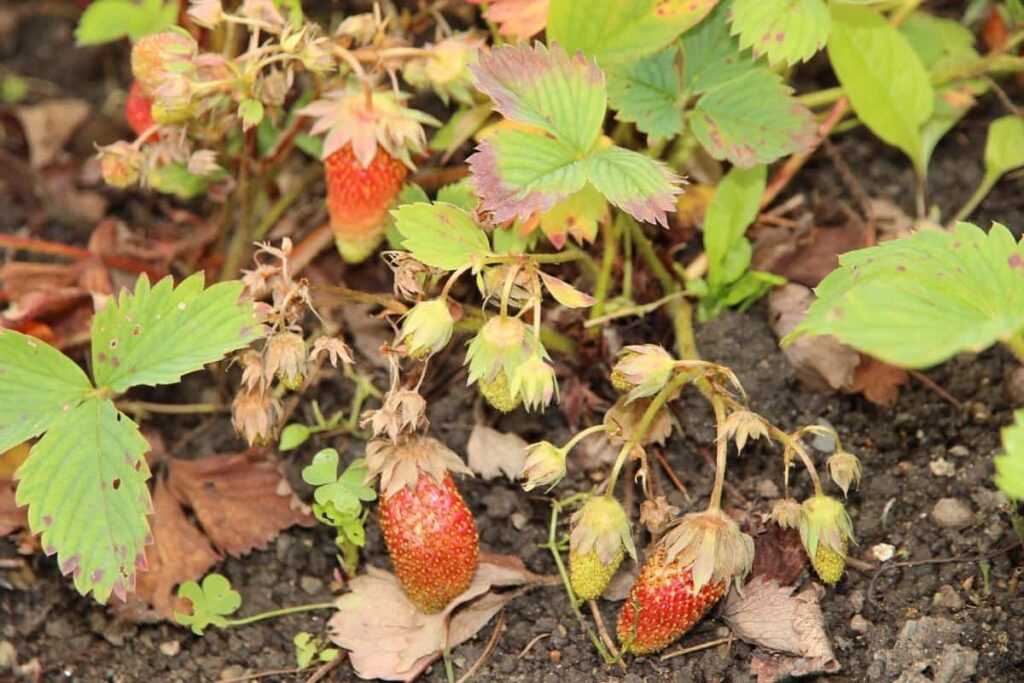
Biological control involves the use of natural enemies, such as beneficial insects and mites, to control pest populations. This can include introducing predator insects, such as ladybugs or lacewings, that feed on pest insects like aphids or spider mites. Additionally, certain nematodes can be used to control pests like strawberry crown moth larvae. By promoting a balanced ecosystem, biological controls can help keep pest populations in check.
Row Covers
Row covers are a physical barrier that can be placed over strawberry plants to exclude pests. These covers are typically made of lightweight fabric and can be used to protect plants from insects, birds, and other pests. Row covers should be carefully installed to ensure proper ventilation and prevent overheating, especially in warm weather. They can be an effective method for preventing pest damage, particularly during vulnerable stages of plant growth.
Sanitation
Practicing good sanitation is essential for managing pest populations. Remove and destroy any plant debris or weeds that can serve as pest habitats. This includes removing old strawberry plants after harvest, as they can harbor pests and diseases. Regularly clean and disinfect tools and equipment used in the strawberry patch to minimize the spread of pests.
Chemical Controls
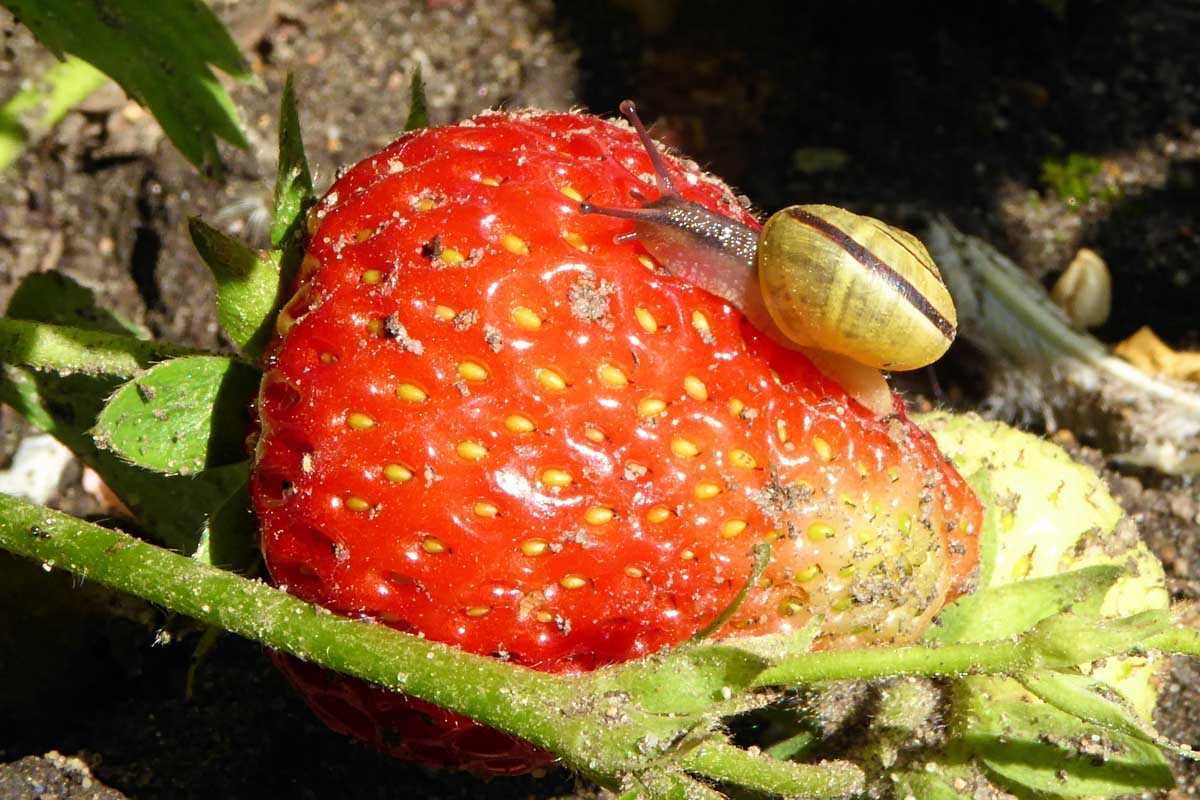
While chemical controls should be used sparingly in an IPM program, there are instances where targeted pesticide applications may be necessary to manage severe pest infestations. When using chemical controls, it is important to select products that are specifically labeled for strawberries and follow the manufacturer’s instructions carefully. Always consider the potential risks to beneficial insects, pollinators, and the environment when using chemical controls.
Conclusion
By implementing a combination of these control methods, strawberry growers can effectively manage pests and reduce their impact on crop health and productivity. It is important to assess the specific pest pressures and circumstances of each individual strawberry field and tailor the control methods accordingly. Regular monitoring and proactive management strategies are key to successful pest control in strawberry production.
Aphids
Aphids are small insects that can be a major problem for strawberry plants. These pests feed on the sap of the plants, causing damage to the leaves, stems, and fruits. Aphids are usually green or yellow in color and have soft bodies. They reproduce quickly, so a small infestation can quickly turn into a large one if not addressed promptly.
Identification
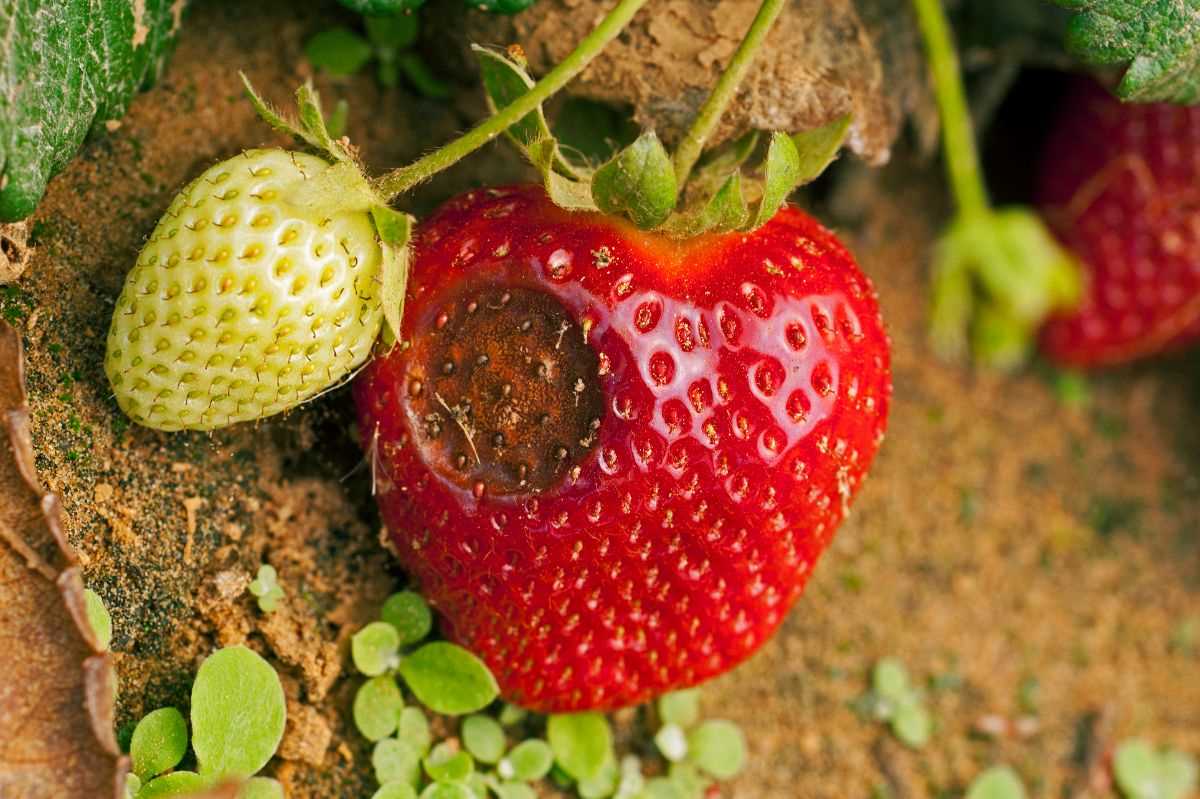
The most common species of aphids that infest strawberry plants are the green peach aphid and the strawberry aphid. The green peach aphid is a small, pale green insect, while the strawberry aphid is usually red or dark green. Both species have long, slender bodies and feed on the undersides of leaves and stems.
Signs of Infestation
Aphids can be detected by closely inspecting the leaves and stems of strawberry plants. Signs of aphid infestation include curled or distorted leaves, yellowing or wilting foliage, and the presence of a sticky substance called honeydew on the leaves or nearby surfaces. Another indication of aphids is the presence of ants, as they are attracted to the honeydew.
Control Methods
There are several effective control methods for aphids on strawberry plants:
- Pruning and removing infested plants: If aphids are detected early on, infected plants can be pruned and removed to prevent the spread of the infestation to healthy plants.
- Biological controls: Introducing natural predators such as ladybugs or lacewings can help control aphid populations. These predators feed on aphids and can help keep their numbers in check.
- Water sprays: Using a strong jet of water to spray the plants can physically remove aphids from the leaves and stems. This method can be effective for smaller infestations.
- Insecticidal soaps or oils: Applying insecticidal soaps or oils can help control aphids. These products suffocate the aphids and disrupt their feeding activity.
- Chemical insecticides: In severe infestations, chemical insecticides may be necessary. However, they should be used as a last resort and only when other control methods have failed. It is important to follow the instructions on the label and use insecticides that are specifically labeled for use on strawberries.
Regular monitoring of strawberry plants for aphids is crucial to catch early infestations and prevent their spread. Implementing these control methods can help keep aphid populations under control and protect strawberry plants from damage.
Question-answer:
What are some common diseases that affect strawberries?
Some common diseases that affect strawberries include gray mold, leaf spot, powdery mildew, and root rot.
How can I prevent gray mold on strawberries?
To prevent gray mold on strawberries, you can remove infected plant materials, provide good air circulation, avoid overhead irrigation, and apply fungicides as necessary.
What is the best way to control powdery mildew on strawberries?
The best way to control powdery mildew on strawberries is to plant resistant varieties, provide good air circulation, avoid overhead irrigation, and apply fungicides if necessary.
How do I know if my strawberries are infected with leaf spot?
You can identify leaf spot on strawberries by the presence of small, circular spots on the leaves that can be dark brown or purple in color. The spots may also have a yellow halo around them.
What is the main cause of root rot in strawberries?
The main cause of root rot in strawberries is excessive moisture in the soil, which can lead to the growth of pathogens such as Phytophthora species.
Are there any natural methods to control pests on strawberries?
Yes, there are several natural methods to control pests on strawberries, such as using beneficial insects, practicing crop rotation, using sticky traps, and applying organic pesticides.








